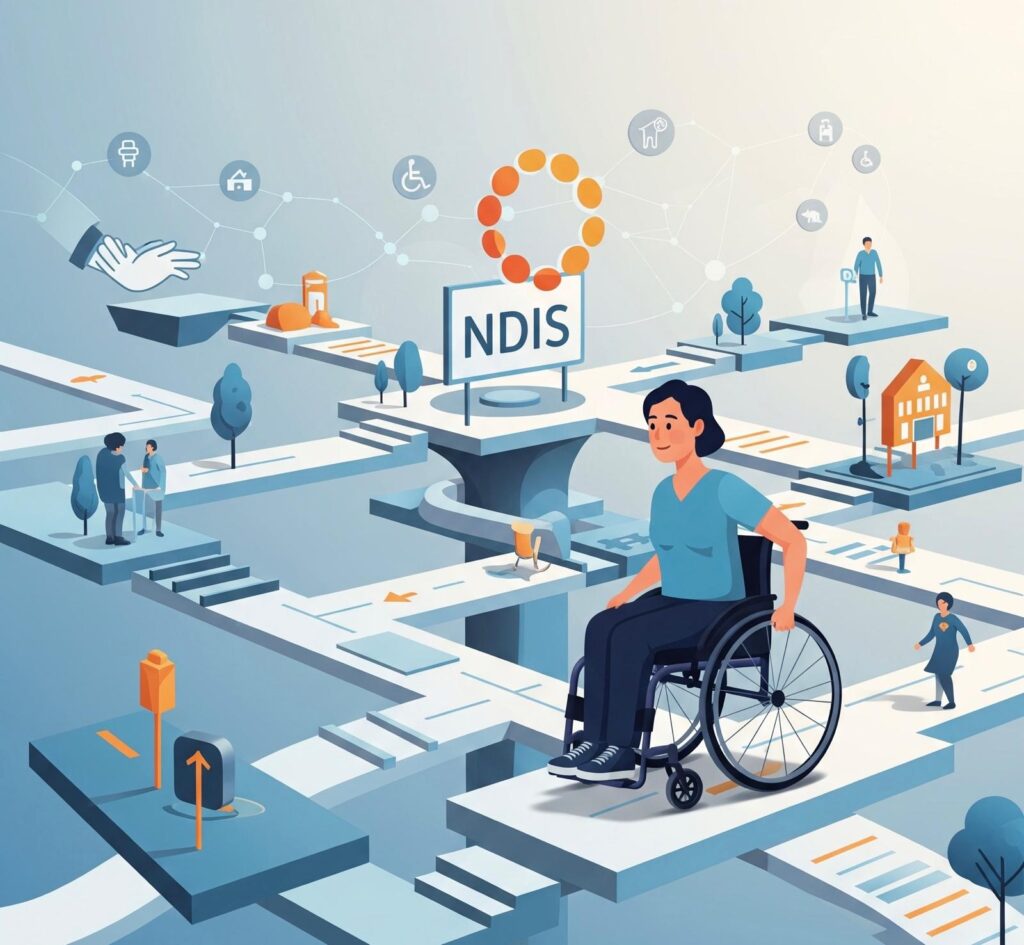Sleepwalking, medically referred to as somnambulism, involves episodes of getting up and walking around during non-rapid eye movement (NREM) sleep—typically occurring in the first third of the night (Ohayon et al. 2012). Although more common in childhood, adults can also experience sleepwalking episodes triggered by stress, sleep deprivation, or underlying conditions. From minor wanderings to more complex behaviours such as leaving the house, sleepwalking can pose safety risks and disrupt household routines (Shapiro & Trajanovic 2020). This article outlines the psychological underpinnings of sleepwalking, reviews current research, and provides evidence-based advice from a psychologist’s perspective on managing and reducing episodes.
Keywords: Sleepwalking (somnambulism), Parasomnia disorders, Arousal from deep sleep, Child and adult sleepwalking, Psychological advice for sleep disorders, Managing nocturnal wanderings
1. Understanding Sleepwalking
1.1 Sleep Stages and Arousal Disorders
Sleepwalking belongs to a group of parasomnias, specifically “disorders of arousal,” where partial awakenings occur out of deep NREM sleep (Ohayon et al. 2012). The individual is neither fully asleep nor fully conscious, often incapable of recall upon waking. Episodes might last a few seconds to half an hour, with varied behaviours—from simply sitting up in bed to performing complex tasks.
1.2 Prevalence Across the Lifespan
While up to 20% of children experience at least one episode of sleepwalking, it tends to wane by adolescence (Shapiro & Trajanovic 2020). Persistent cases into adulthood can relate to genetics, stress levels, and disrupted sleep patterns (Irish et al. 2015). Identifying triggers and understanding the underlying physiology helps in formulating effective interventions.
2. Causes and Risk Factors
2.1 Genetic Predisposition
Studies suggest a hereditary link—children with one or both parents who have a history of sleepwalking face a higher likelihood of episodes (Hublin et al. 1997). The genetic influence can intersect with environmental factors to determine the frequency and intensity of somnambulism.
2.2 Sleep Deprivation and Stress
Insufficient sleep or extreme tiredness can prompt deeper and more fragmented NREM stages, heightening the chance of partial arousals (Shapiro & Trajanovic 2020). Chronic stress, anxiety, or significant lifestyle changes (e.g., shifting time zones) can also disrupt stable sleep architecture, triggering episodes.
2.3 Alcohol, Medications, and Other Medical Conditions
Excessive alcohol consumption near bedtime or certain medications (sedatives, antihistamines) may intensify brain arousal, fuelling sleepwalking episodes (Ohayon et al. 2012). Underlying conditions like obstructive sleep apnoea or restless legs syndrome can fragment sleep, increasing the propensity for parasomnias (Irish et al. 2015).
3. Potential Dangers and Psychosocial Implications
3.1 Safety Concerns
During an episode, individuals lack full awareness, risking collisions, falls down stairs, or leaving the house (Shapiro & Trajanovic 2020). Implementing preventative measures—securing windows, doors, and removing clutter—mitigates potential harm.
3.2 Sleep Disruption for Household Members
Co-sleepers or family members may wake abruptly, leading to disrupted sleep cycles. Repeated disturbances can generate tension within the household, emphasising the need for professional advice and home adjustments (Irish et al. 2015).
3.3 Psychological Stress and Stigma
Sleepwalkers may feel embarrassed or anxious about potential reoccurrences, especially if episodes involve unusual or socially awkward behaviour. Seeking psychological support can reduce self-consciousness, reinforce coping strategies, and address underlying stressors (Shapiro & Trajanovic 2020).
4. Psychological Advice and Management Strategies
4.1 Maintaining Consistent Sleep Routines
A stable bedtime and wake time support circadian rhythms and reduce deep NREM fragmentation (Sleep Health Foundation [SHF] 2021). Avoiding sleep debt is crucial—adults typically require 7–9 hours of quality sleep, while children vary by age group.
4.2 Stress Reduction Techniques
Persistent stress or anxiety can exacerbate arousal disorders (Ohayon et al. 2012). Psychologist-recommended techniques include:
- Mindfulness or Relaxation Exercises: Practising breathing techniques or progressive muscle relaxation before bed.
- Cognitive-Behavioural Therapy (CBT): Identifying and re-framing negative thought patterns contributing to insomnia or stress.
- Journaling: Offloading worries on paper may minimise mental preoccupation at night.
4.3 Scheduled Awakenings
For frequent, predictable episodes—often in children—scheduled awakenings 15–20 minutes before the usual onset can preclude an episode (Shapiro & Trajanovic 2020). This approach temporarily disrupts the deep sleep cycle, preventing the partial arousal from happening.
4.4 Cognitive-Behavioural Approaches for Arousal Parasomnias
Therapists might incorporate behavioural modifications—e.g., hypnosis or relaxation training—to address triggers and reduce episode severity. Psychoeducation about sleep hygiene and the mechanics of parasomnias fosters empowerment and clarity on coping measures (Irish et al. 2015).
5. Medical Assessment and Adjunctive Treatments
5.1 When to Consult a Healthcare Professional
Medical evaluation is recommended if:
- Sleepwalking episodes pose recurrent safety threats.
- Episodes become more frequent, intense, or persist into adulthood without obvious triggers.
- Co-occurring conditions (e.g., insomnia, sleep apnoea) exacerbate daytime fatigue.
A GP or sleep specialist can run sleep studies (polysomnography) or lab tests to identify physiological contributors (Ohayon et al. 2012).
5.2 Medication Options
In severe cases—especially in adults—short-term pharmacological intervention (e.g., low-dose benzodiazepines or antidepressants) may reduce the depth of NREM sleep. However, medication is generally a secondary line of defence after lifestyle or behavioural methods (Krystal 2012).
5.3 Environmental Modifications
Installing childproof locks, motion sensors, or alarms can alert households to nighttime wanderings. Removing tripping hazards and restricting stair access—potentially by gates—lowers the risk of physical harm (Irish et al. 2015).
6. Long-Term Outlook and Future Directions
6.1 Natural Resolution in Children
Most paediatric cases resolve spontaneously over time. Encouraging steady sleep habits, mitigating stress, and limiting overtiredness can accelerate this resolution (SHF 2021).
6.2 Ongoing Research and Psychological Insights
Emerging studies focus on deeper neurological insights—like the role of hyperarousal in specific brain regions. Understanding these processes could refine psychological and pharmacological interventions, improving outcomes for frequent adult sleepwalkers (Ohayon et al. 2012).
6.3 Integrating Therapy and Lifestyle Strategies
As with other arousal parasomnias, long-term stability often involves combining stress management, good sleep hygiene, and—if necessary—short-term medication (Krystal 2012). A holistic approach ensures that multiple risk factors are addressed simultaneously.
Conclusion
Sleepwalking, though often transient in childhood, can persist or arise in adulthood, risking safety concerns and emotional strain. Paradoxically, it reflects a partial arousal from deep sleep—leaving the individual in a hazy, unconscious state (Shapiro & Trajanovic 2020). By maintaining consistent sleep schedules, reducing stress, and, where appropriate, pursuing psychological or medical interventions, many sleepwalkers can manage or minimise episodes. Whether it’s scheduled awakenings for children or cognitive-behavioural approaches for adults, professional advice can be pivotal in ensuring restful nights for both sleepwalkers and those around them.
References
- Hublin, C., Kaprio, J. & Partinen, M. 1997, ‘Genetic Factors in Sleepwalking’, Archives of General Psychiatry, vol. 54, no. 1, pp. 73–78.
- Irish, L.A., Kline, C.E., Gunn, H.E., Buysse, D.J. & Hall, M.H. 2015, ‘The Role of Sleep Hygiene in Promoting Public Health: A Review of Empirical Evidence’, Sleep Medicine Reviews, vol. 22, pp. 23–36.
- Krystal, A.D. 2012, ‘Disorders of Sleep and Wakefulness’, in Kaplan and Sadock’s Comprehensive Textbook of Psychiatry, 9th edn, Lippincott Williams & Wilkins, Philadelphia, pp. 69–82.
- Ohayon, M.M., Mahowald, M.W., Dauvilliers, Y., Krystal, A.D., Léger, D. & Sebban, C. 2012, ‘Prevalence and comorbidity of nocturnal wandering in the US adult general population’, Neurology, vol. 78, no. 20, pp. 1583–1589.
- Shapiro, C.M. & Trajanovic, N.N. 2020, ‘Somnambulism (Sleepwalking)’, in Principles and Practice of Sleep Medicine, 6th edn, Elsevier, Philadelphia, pp. 1054–1059.
- Sleep Health Foundation (SHF) 2021, Sleepwalking Fact Sheet, SHF, viewed 9 February 2025, https://www.sleephealthfoundation.org.au/.
Enjoyed Our Free Daily Mental Health Articles?
If you find value in our insights and resources, we’d love to hear from you! Please consider visiting our Google Business Profile nearest to your location and leaving a review. Your feedback not only helps us improve but also allows us to continue providing free, high-quality mental health articles to support your wellbeing every day. Thank you for your support!
How to get in touch
If you or your NDIS participant need immediate mental healthcare assistance, feel free to get in contact with us on 1800 NEAR ME – admin@therapynearme.com.au.







